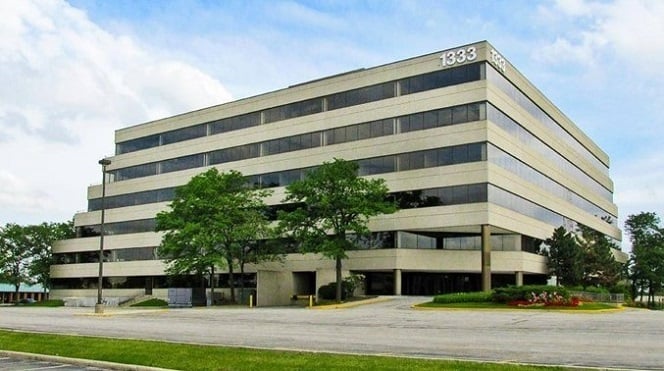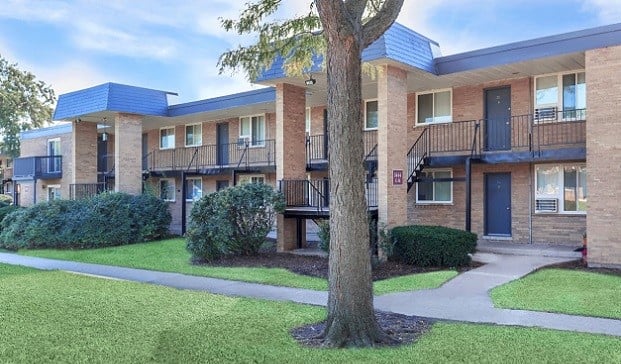CHICAGO—Yesterday, at a local community meeting, officials from the Chicago Loop Alliance presented their proposal to expand the downtown's special service area, which pools funds collected from building owners based on the value of their properties. The funds pay for extra street cleaning, landscaping and infrastructure repair, staff that will discourage aggressive panhandling, and other services.
As reported yesterday in GlobeSt.com, the alliance, which administers the SSA, wants to expand it beyond the State St. corridor to include properties along Wabash Ave., the west side of Michigan Ave., and the east side of Michigan north of Randolph St. and south of the river. The move would boost the SSA's budget from $2.5 million to about $6.3 million.
But some of the property owners at the meeting, especially those with the more valuable office buildings on Michigan Ave., cried foul, and said their tax dollars will end up funding improvements and upkeep for less valuable sections of the Loop, such as Wabash Ave. This year, the SSA, which determines its budget before setting the tax rate, used a 0.405% assessment to bring in the necessary funds, and if the expansion goes forward, it will need a 0.3496% assessment to hit $6.3 million.
“This just isn't the right time to propose a property tax increase,” Ron Tabaczynski, director of government affairs for BOMA/Chicago, told GlobeSt.com. His organization, which represents most downtown building owners, opposes the proposed expansion and 15-year renewal of the SSA, which the city council must approve.
Nine BOMA members sit within the boundaries of the current SSA, and the expansion would bring that to 45, including 36 taxable properties. It would also mean their overall tax bill, now about $95 million, would increase another $5 million. And the on-going pension crisis, and all the talk about boosting property taxes to help solve it, Tabaczynski said, has members on edge about any additional financial burdens, especially if the SSA directs the funds away from the most valuable property. “Those are the concerns we're hearing everywhere.”
However, members of the alliance, which includes a diverse collection of property owners, universities, downtown businesses, tenants, city council members, city departments and religious institutions, among others, say the downtown community could better address challenges faced in the Loop by acting together. They plan to present a detailed proposal to the city's Department of Planning and Development by June, and hope to get council approval this year.
“We really think that by renewing properties on Wabash Ave. we can add value to properties on State St. and Michigan Ave.,” Michael M. Edwards, executive director of the alliance, told GlobeSt.com. “This is the tool we have, and it's something that we have used successfully for over 30 years.”
“I think people believe in the mission of the SSA,” said Mark Davids, the general manager of 131 S. Dearborn, a 37-story, 1.5 million-square-foot, class A office tower that sits just inside the current boundaries, “but the issue for us is proportionality.” He calculated that upkeep and maintenance of the streets surrounding the building cost only a few thousand dollars per year. “But our building alone pays for 10% of the SSA right now.”
“My quick feeling is that the office buildings on Michigan Ave. are going to subsidize all the fine things you want to do on Wabash,” added Paul O'Conner of Hamilton Partners, which operates the historic Sante Fe Building at 224 S. Michigan Ave.
But Martin Stern, the alliance chairman and executive vice president of US Equities Realty, LLC, urged Davids and others to look beyond how much footage their particular building had on the streets. Although owners of the most valuable properties pay the most, they “also have the most upside potential.”
“The panhandling issue is probably the worst on Michigan Ave.,” Stern pointed out, and by curtailing that and pouring more money into beautification, an expanded SSA will “yield an increase in the identity of the area and the desirability of the area,” as well as a boost to property values.
Richard Cooke, general manager with the CIM Group, which runs Block Thirty Seven, the vertical shopping center that occupies an entire city block in the heart of the Loop, said “we have some issues with proportionality, but overall, I think we're adding tremendous amenities,” and the SSA has helped make the State St. retail district known throughout the country.
Both Stern and Edwards said they would be interested in possibly establishing a business improvement district that offers more flexibility, but that would require a change in state law. And the SSA, while not perfect, does allow all included property owners to help determine the budget each year, what projects get tackled, and ultimately, the annual tax rate.
“Is everybody going to be exactly equal?” asked Stern. “Probably not, but everyone will be better off.”
Continue Reading for Free
Register and gain access to:
- Breaking commercial real estate news and analysis, on-site and via our newsletters and custom alerts
- Educational webcasts, white papers, and ebooks from industry thought leaders
- Critical coverage of the property casualty insurance and financial advisory markets on our other ALM sites, PropertyCasualty360 and ThinkAdvisor
Already have an account? Sign In Now
© 2024 ALM Global, LLC, All Rights Reserved. Request academic re-use from www.copyright.com. All other uses, submit a request to [email protected]. For more information visit Asset & Logo Licensing.








